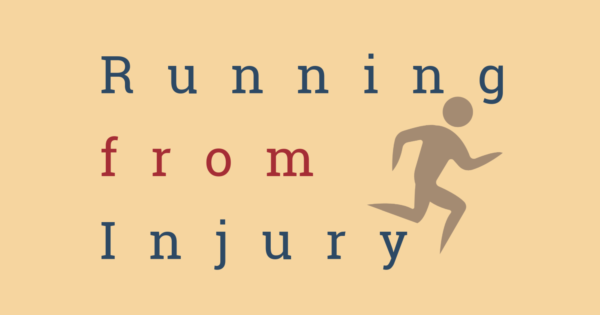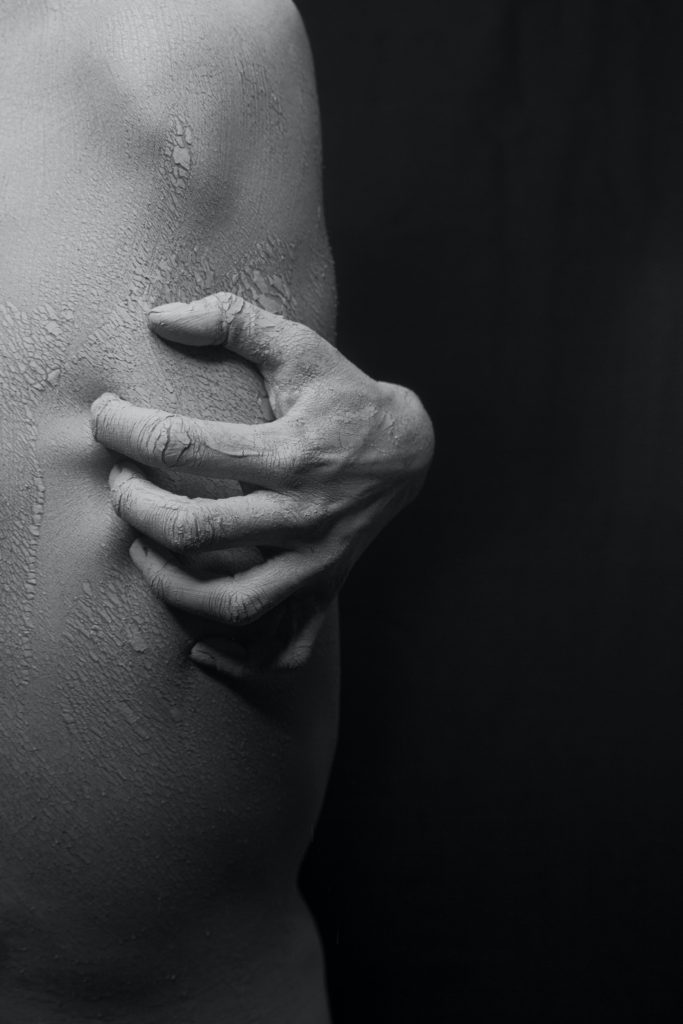
Who here has pain in their upper back? You know that feeling of tightness somewhere near your shoulder blades that makes you feel like you might soon turn into a hunch back. Whether you have been on the bike, in the car or on the phone for too long, that upper back pain starts to creep up on you again and again. More often than not, upper back pain can be due to a lack of mobility and strength. Our bodies were meant to move, and they will start to speak up (i.e. become painful) when they are not moving enough, or not moving the right way. Upper back pain, is the body’s way of telling you that there is something going on. Luckily there are some things that you can do to help improve the mobility and strength in your upper back. Getting your upper back moving can be the thing it needs for that upper back pain to quiet down.
It’s more than just pain control
Having good upper back mobility is crucial for many things. When swimming, good upper back mobility allows you to bring your arms up higher overhead, thus improving your reach for stroke efficiency. Having upper back mobility also helps with your ability to turn your head breath to BOTH sides. Upper back mobility also decrease the risk of developing shoulder pain from swimming, and neck pain from cycling. Oh, and also having some good upper back mobility can also help with your running form.
Strengthening the muscles in the upper back can also help. Good upper back strength your overall posture so that you appear more confident. It can also improve your posture and position on the bike and while running, so that you can hold your torso steady for an improved transfer of power to your legs. Having good upper back strength can also help to prevent shoulder pain and discomfort that can occur with swimming.
Let’s talk about the anatomy of the upper back. We’ll go over the major anatomical players and talk a little bit about what they do. Then we will go over some common causes of that upper back pain, and what can be done to combat it.
What is back there?
Bones

Your spine is made up of 33 bones called vertebrae. These vertebrae have some variation to them depending on where they are located (for example, the vertebrae in your neck are different than the vertebrae in your low back). There are 12 vertebrae in the upper back that are called thoracic vertebrae. The vertebrae in most of your back (with the exception of the sacrum and coccyx) are separated by discs. Throughout most of your back, there are also nerves that exit out of each level of the spine.
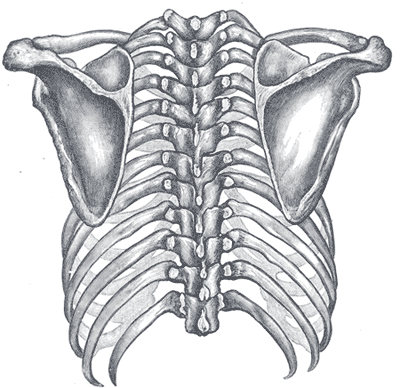
The vertebrae in your upper back are connected to your ribs. Each of the 12 vertebrae in the thoracic spine are connected to 2 (right and left) ribs.
The shoulder blades are also in the upper back. They are the two plate-like bones that sit against the ribs. The shoulder blades can rotate up, and down; move together, and apart; as well tilt forward, and back.
Muscles
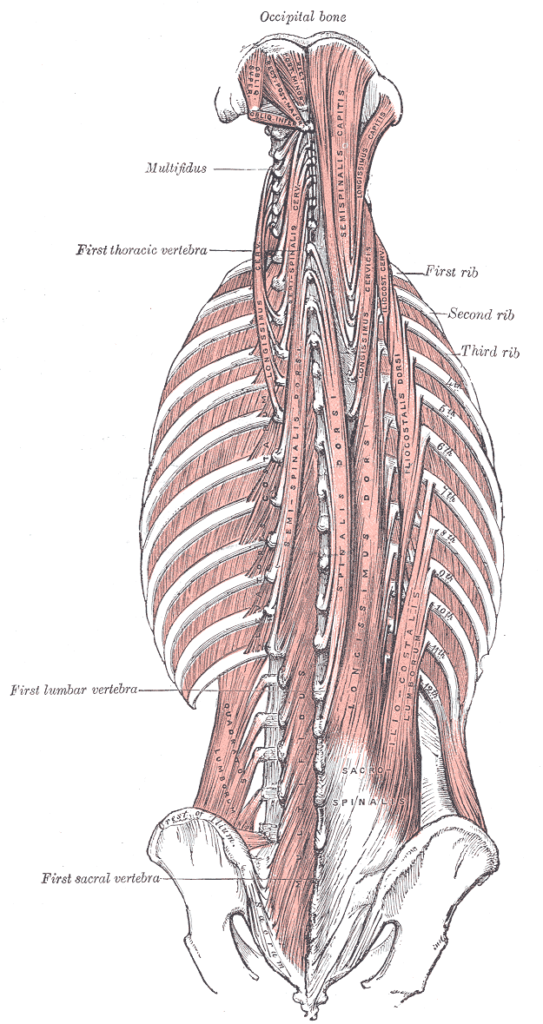
There are a lot of muscles in your upper back. In the interest of time, and my sanity I’m only going to discuss some of the major players.
Let’s start with the muscles that control movement at the spine. The paraspinal muscles are the muscles that sit along both sides of the spine. They are responsible for side bending the spine, and extending the spine (bending backwards). There are also smaller muscles that connect each vertebrae to the vertebrae both above and below. These muscles are responsible for helping to rotate, or twist the spine.
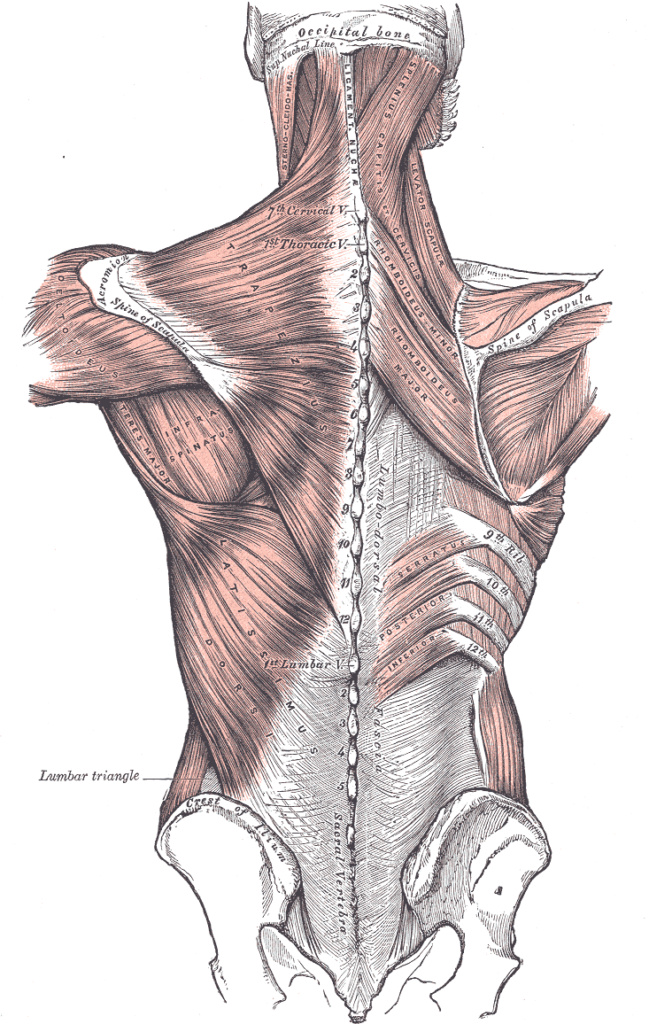
The shoulder blades are surrounded by muscles that are also important to upper back mobility. Your trapezius is the large diamond shaped muscle. The job of the trapezius is to help move and position the shoulder blades. Shoulder blade movement is important when moving your shoulders, such as when you bring your arms up overhead. Shoulder blade position is also important when moving the shoulders, and it is also important when trying to have good posture. The rhomboids and serratus anterior, and latissimus dorsi are other muscles that are important for your shoulder blades, and therefore upper back.
Another major muscle group in the upper back are the intercostals. These are the muscles that sit in between your ribs. When taking a deep breath in, your rib cage needs to expand as your lungs fill with air. Some of these muscles help to pull the ribs up while you inhale. When they contract, they help to pull your ribs down, thus better allowing you to exhale.
Nerves
There are nerves that exit out from each level of vertebrae. Nerves are tricky and fickle structures. The role that nerves play in the upper back is not completely understood. Nerves often times cause problems when things such as discs coming out of place, inflammation, or muscle tension pressure is put on them. In the clinic, I typically do not see patients where the nerves and discs in the upper back are causing pain into that area. However, issues with the discs and nerves in the neck can often refer pain that is felt along the inner edge of the shoulder blades.
What causes upper back pain
There are many causes of upper back pain, and many reasons why you might feel tightness in this area. Some of the most common offenders are:
- Weakness and a lack of mobility in the muscles around the shoulder blades.
- A lack of mobility in the thoracic spine, and the muscles that surround it.
- Tightness in the front of shoulder shoulders (a.k.a your chest).
- Your neck
What can be done for upper back pain:
- Practice good posture, and ergonomics while working.
- Mobilize stiff areas.
- Strengthen weak areas.
- Stretch the muscles in the chest.
Want to learn more about what type of exercise can help with that nagging pain in between your shoulder blades? Even better, want to stay up to date on all of the latest happenings here at runningfrominjury.com? By signing up you will get some running wisdom from me, a physical therapist – straight to your inbox. Sign up now to get an exercise routine designed to help improve your upper back mobility and make you less like Quasimoto.
